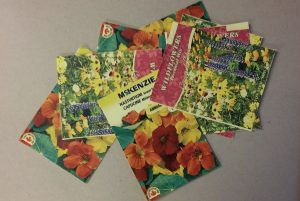“I wish this could be a snapshot into a meeting, at the beginning, before we even begin to discuss programs.”
— When My Home Is Your Business audience member.

November has been a busy and exciting month for Transforming Stories, Driving Change. In addition to our current workshop creation series with youth from Good Shepherd Youth Services, When My Home is Your Business (WMHIYB), a Transforming Stories production created earlier this year with participants recruited through the Social Planning and Research Council of Hamilton‘s Displacements Project, was performed for audiences at the Canadian Alliance to End Homelessness (CAEH) national conference and the Gathering on Art, Gentrification, and Economic Development (GAGED).
Since both the CAEH and GAGED gatherings foregrounded issues of homelessness and displacement, Alice, Sami, Hannah, and Emma—the fictionalized tenants of WMHIYB’s apartment building from hell—found themselves sharing their tale of living precariously in a mouse-infested building, with a dysfunctional elevator, a single working washer and drier, and a fire alarm that is regularly triggered by the dust from renovations engineered to displace them, with in-the-know-audiences.
Patti McNaney, Interim Executive Director at the Social Planning and Research Council of Hamilton, and Katherine Kalinowski, Assistant Director of Good Shepherd Hamilton, graciously hosted the post-performance discussion at CAEH. After getting confirmation from the audience that there was little in the play’s content that surprised them—little that they hadn’t heard, seen, or lived before—Katherine posed this question: “What’s the difference in telling a story this way as opposed to other ways that we learn about people’s lived experience and as advocates and allies make sense of those stories?”
One audience member responded: “As I was watching, I was thinking, I wish I could have taken this into my meeting last week… policy and programs are very far removed. Something like the complaints, how it actually affects the daily life of tenants, and how it can actually create bigger, bigger problems and there’s more stress, and there’s more complexity…You don’t get to see that in an office in Yellowknife. You have no idea. You just know that this person didn’t pay their rent, or they did this, or this… I wish this could be a snapshot into a meeting, at the beginning, before we even begin to discuss programs.”
After the GAGED performance an audience member offered a similar reflection: “One of the things I thought was really powerful was that while many of us talk about the systemic issues with housing, we often talk about these things in a really abstract way. Hearing these very personal stories, albeit fictionalized, but obviously relating to very real experiences, kind of turned that abstraction on its head. So we get a sense of the very real material and emotional effects, and the relationships that are built but also suffer as a result of some of these issues.”
For many audience members, it’s the relationships that develop between Alice, Sami, Hannah, and Emma that are at the heart of When My Home is Your Business. As the play’s characters navigate the multiple stresses of their neglectful landlord, unresponsive city agencies, and gentrification’s ever-looming threat, they must also struggle to overcome the horizontal tensions that are amplified by these larger fear-producing structural forces.

When, near the end of the play, Emma shares packets of flower seeds with her neighbours, the seeds become a metaphor for their collective relationship and their visions for a better Hamilton. In the play’s final scene Alice, Sami, Hannah, and Emma stand beside their doors and share their hopes in a direct appeal to the audience. In Alice’s words: “The most beautiful gardens are not just made out of roses. A garden is made out of many flowers, but it needs rich soil and time to grow. We need you to tell us which flowers you want to help to grow. We need you to be part of our garden.”
After the performance, Mashal Khan and Sabrina Sibald from Social Planning and Research Council of Hamilton hosted an opportunity for audience members to share seed reflections on the performance with their home communities. They offered to take photos of participants in front of one of the doors from the play while they held a sign with a message written in response to the prompt: If this door could speak, what would this door say?
Here’s Sabrina standing in front of Emma’s door with her response.

Sabrina Sibald, Assistant Social Planner with the Social Planning and Research Council of Hamilton, holding sign front of Emma’s door.

